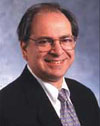Issue Archive
Editor’s Wrapup: Lab and Living Room
 The familiar version of the story is that women had to leave the home to make their voices heard in the world, but an exhibit at New York’s Jewish Museum challenges that view. Concentrating mostly on Europe in the 18th and 19th centuries, “The Power of Conversation: Jewish Women and Their Salons,” shows how intelligent women in restricted times advanced social change, promoted culture and put themselves at the center of their societies—all without leaving their living rooms. Rahel Musleah takes a look at the likes of Henrietta Herz, Rahel Levin Varnhagen, Amalie Beer and Geneviéve Straus, beginning on page 36.
The familiar version of the story is that women had to leave the home to make their voices heard in the world, but an exhibit at New York’s Jewish Museum challenges that view. Concentrating mostly on Europe in the 18th and 19th centuries, “The Power of Conversation: Jewish Women and Their Salons,” shows how intelligent women in restricted times advanced social change, promoted culture and put themselves at the center of their societies—all without leaving their living rooms. Rahel Musleah takes a look at the likes of Henrietta Herz, Rahel Levin Varnhagen, Amalie Beer and Geneviéve Straus, beginning on page 36.
Dorit Aharonov may enjoy conversing with friends in her Jerusalem living room, but her influence on the world comes from the laboratory. Based at the Hebrew University of Jerusalem, she is one of the world’s leading theorists applying the logic of quantum physics to computers. In an interview with Charley J. Levine (page 44), she reflects on anticipated breakthroughs in computers, on the role of women in science and on Israel’s place in the world scientific community.
Jewish women advance knowledge and culture collectively as well as individually. The entire world knows of the remarkable work Hadassah physicians did in saving lives during the 2000-2004 wave of terror; what many reporters barely noticed was that the most critical treatment took place in emergency facilities badly in need of renovation. In March, the Hadassah–Hebrew University Medical Center in Ein Kerem inaugurated a new Judy and Sidney Swartz Center for Emergency Medicine, the most advanced facility of its kind in the Middle East. June Walker’s President’s Column (page 4) and Wendy Elliman’s medical report (page 60) tell the story of the new center.
But as up-to-date as the new facility is, it also represents a link to the past: Many Jewish women contributed to its building from their living rooms.










 Facebook
Facebook Instagram
Instagram Twitter
Twitter
Leave a Reply